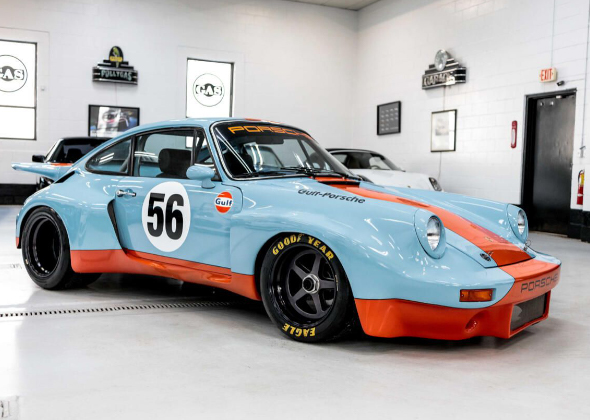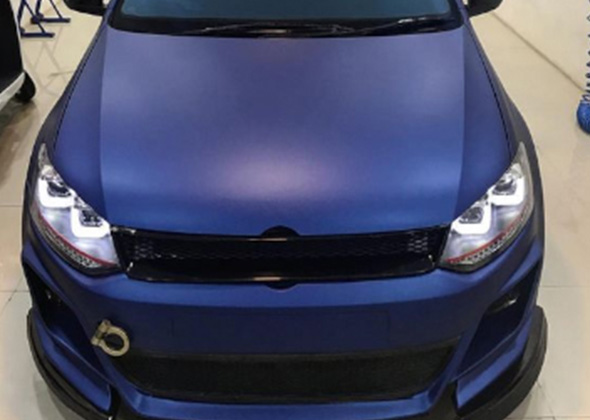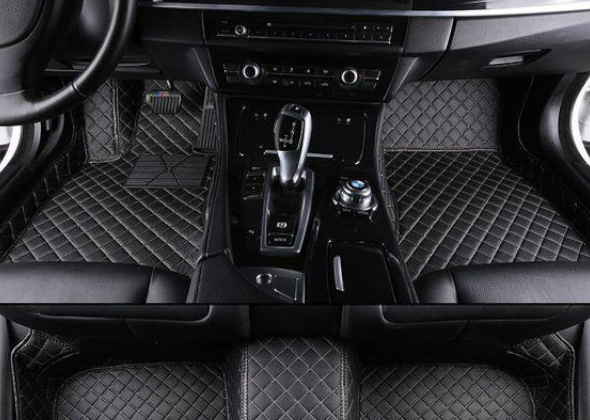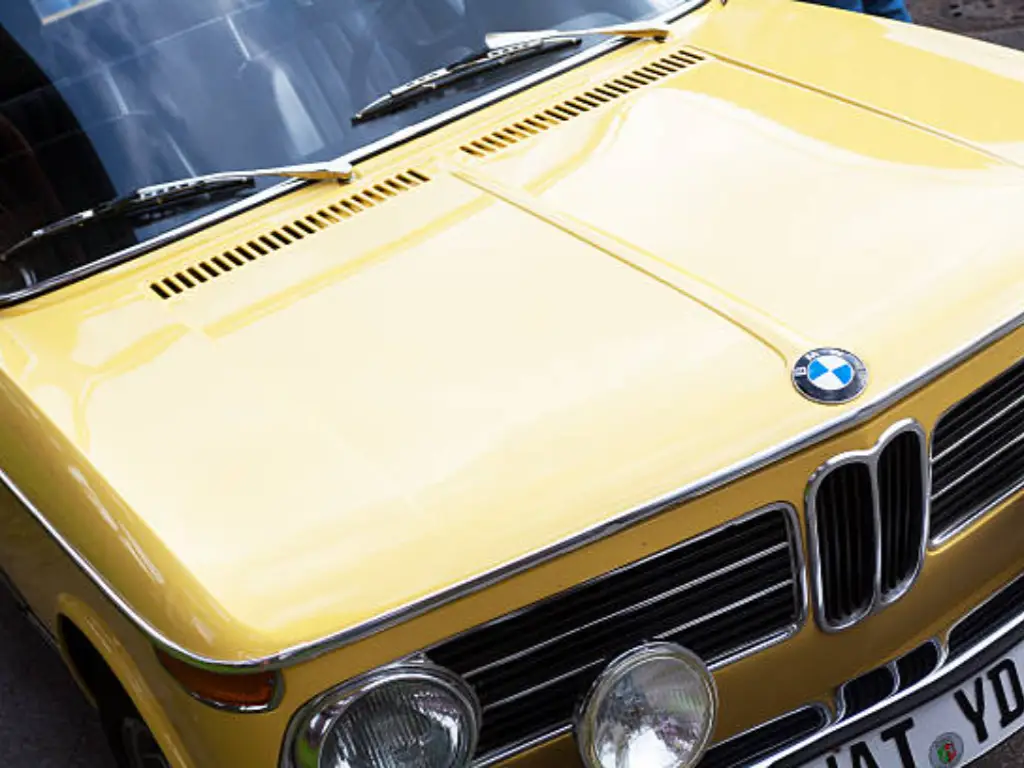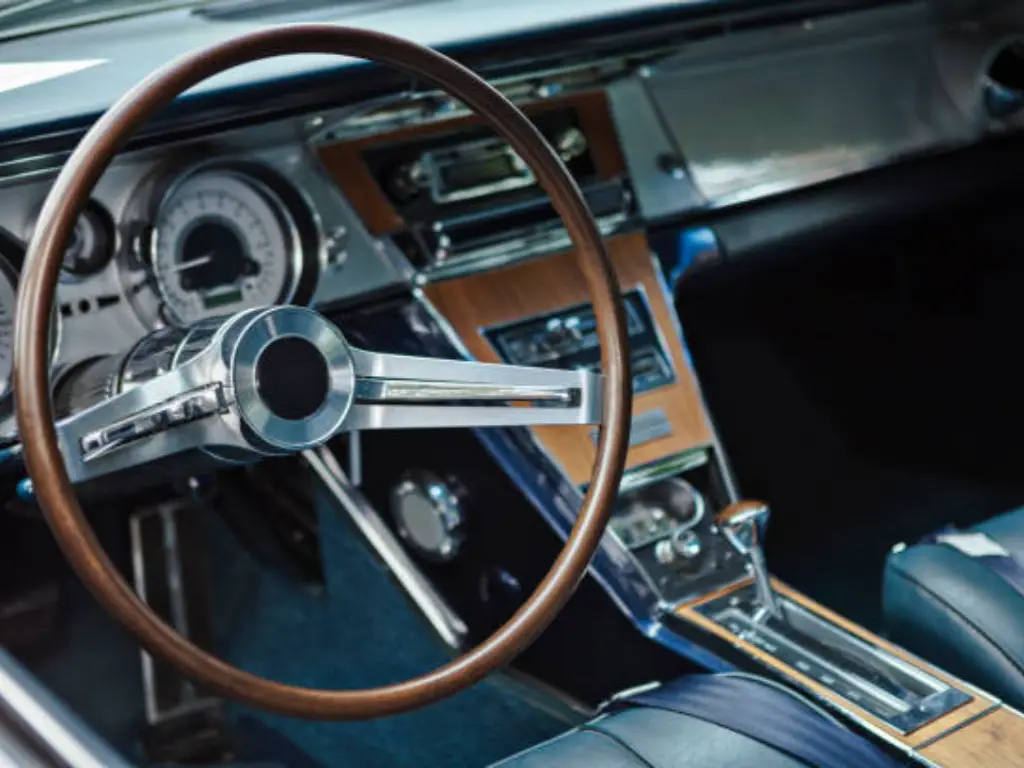
How Interiors Tell the Story of the Automobile
Enter any car, whether it is a pre-war vintage or an electric car, and you enter a time capsule. The steering wheel, the seats, the dashboard–they are not just functional elements. They are a product of their time, the technology of their time, the social aspirations of their time, and the artistic movements of their time. It is the interior of a car that the human bond to the machine is formed. It is a personal area that narrates a bright history of development, aspiration, and changing cultural beliefs.
As modern vehicles have emerged, there has been a growing adoption of more advanced technology and automotive interior design that is not only innovative but also conveniently tailored to the growing need for personalized space. It is not just a tour of the history of interior design that has been introduced in the car; it is a tour of what cars themselves are all about, how the opulent dreams of the past have turned to a digital environment where autonomous cars are redefining the way we think about interior experience. The designs in the contemporary world revolve around the best user experience, and driving is no longer about control but the smooth combination of some of the most important trends in technology and comfort.
Iconic Milestones: 5 Interiors That Defined Their Era
Certain car interiors transcend their time, becoming benchmarks that influence the automotive industry for decades. By examining these definitive examples, we can trace the arc of automotive evolution, highlighting how vehicle’s interiors have shaped the overall driving experience and paved the way for innovations that continue to define the driving experience today.
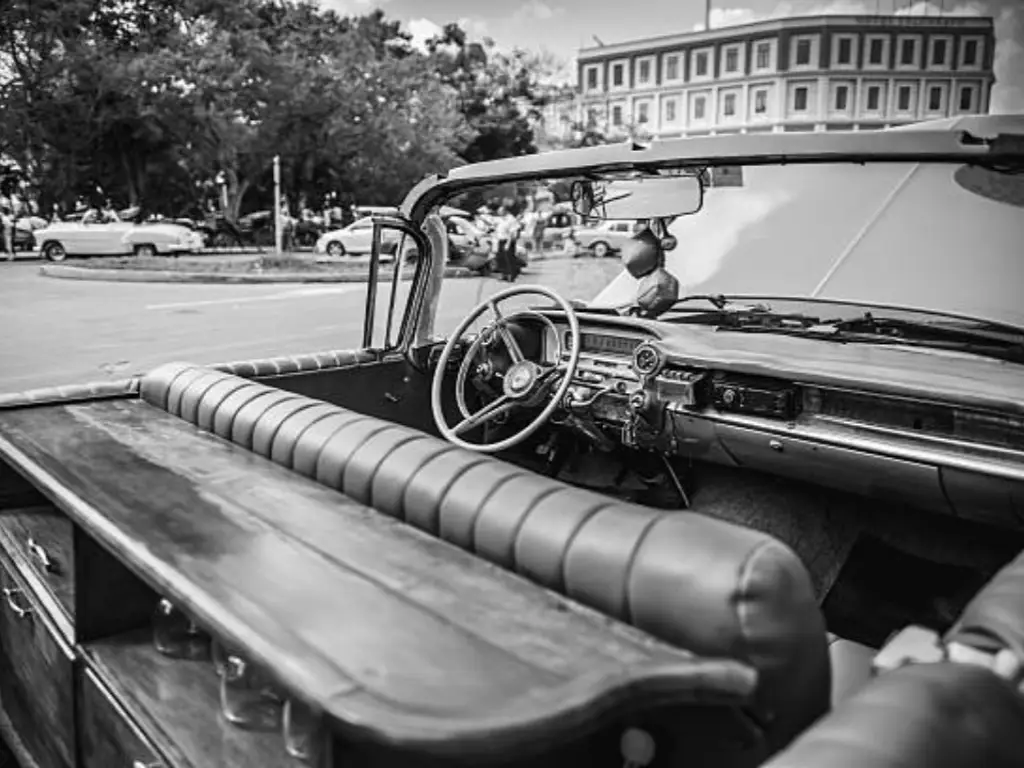
The 1950s Cadillac Eldorado: Chrome, Color, and Unbound Optimism
The interior of a mid-1950s Cadillac Eldorado is a rolling monument to post-war American optimism. It was an era of economic boom, suburban expansion, and fascination with the Jet Age. This wasn’t just a cabin; it was a statement.
Designers utilized sweeping, wrap-around dashboards inspired by aircraft cockpits, often in bold, two-tone color schemes like turquoise and white or pink and black. Chrome was applied liberally to everything from the speaker grilles to the window controls, reflecting the era’s love for all things shiny and new. The steering wheel was a large, ornate piece of art, often featuring a prominent “V” emblem and a chrome horn ring. It was a space designed to be seen, embodying an unbound confidence that the future was bright. The luxury car experience was personified here, where the design elements reflected the aspirational lifestyle of the time, making it a defining moment in the automotive industry.
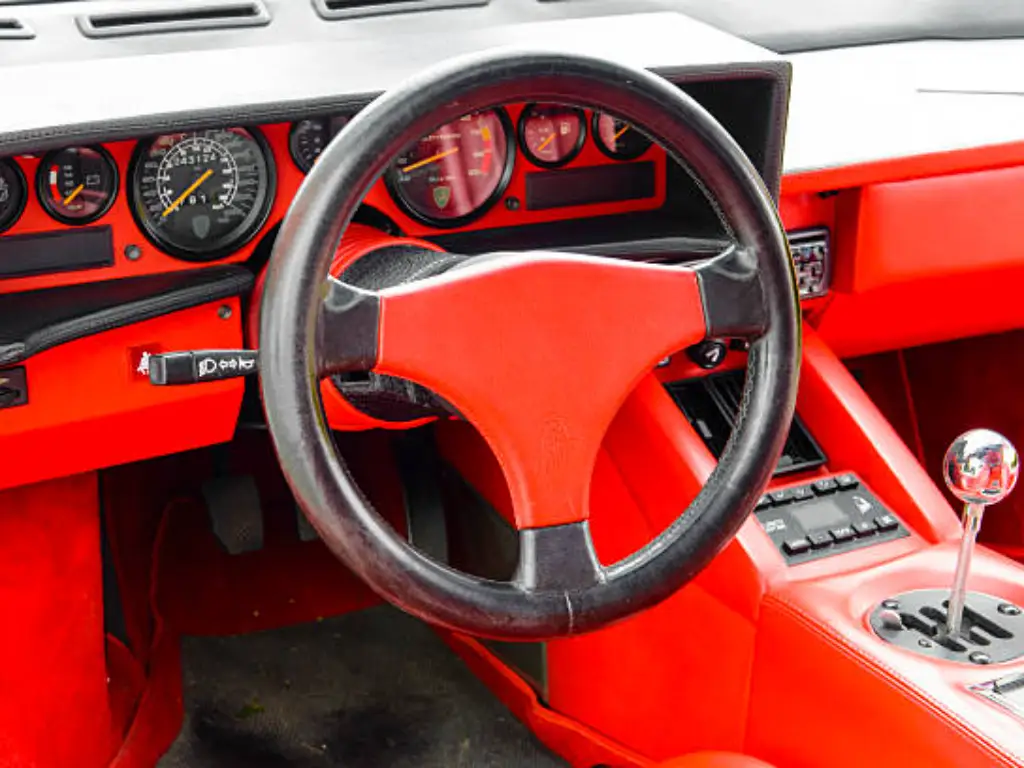
The 1970s Lamborghini Countach: The Birth of the Driver-Focused Supercar Cockpit
As the optimism of the 50s gave way to the realities of the 70s, including the oil crisis, a new design ethos emerged. In the world of supercars, this meant a laser focus on the driver.
The Lamborghini Countach’s interior is perhaps the ultimate expression of this philosophy. Its dramatic, wedge-shaped exterior flowed directly into the cabin, creating a cockpit that felt more like a fighter jet than a car. The driver sat low, enveloped by a sharply angled dashboard where all gauges and switchgear were oriented towards them. The deep-dish steering wheel and prominent gated manual shifter were the primary touchpoints, reinforcing the purely mechanical connection between driver and machine. It was unapologetically functional, prioritizing the thrill of the drive over passenger comfort.
This philosophy created the blueprint for the luxury car interior, emphasizing the driving experience over everything else. In doing so, it set a new standard for car manufacturers seeking to push the limits of performance and design.
The 1990s Lexus LS400: Setting the Benchmark for Quiet Luxury and Ergonomics
In 1989, the Lexus LS400 arrived and fundamentally challenged the definition of luxury. Its interior was not about flash or raw performance; it was a masterclass in obsessive engineering, quality, and ergonomics. Toyota’s engineers reportedly spent over $1 billion on its development, and it showed. The cabin was a sanctuary of tranquility, setting new industry standards for suppressing noise, vibration, and harshness (NVH). Every button, switch, and dial was designed for a satisfying tactile feel. The electroluminescent gauges were a revelation in clarity, and the California walnut woodgrain trim was sourced from the same supplier as Steinway pianos. The LS400 proved that luxury could be defined by serene silence, flawless build quality, and intuitive design, influencing luxury car interiors for years to come. It also set the bar for the vehicle’s interior experience, combining comfort, elegance, and innovative technology in a way that had never been seen before.
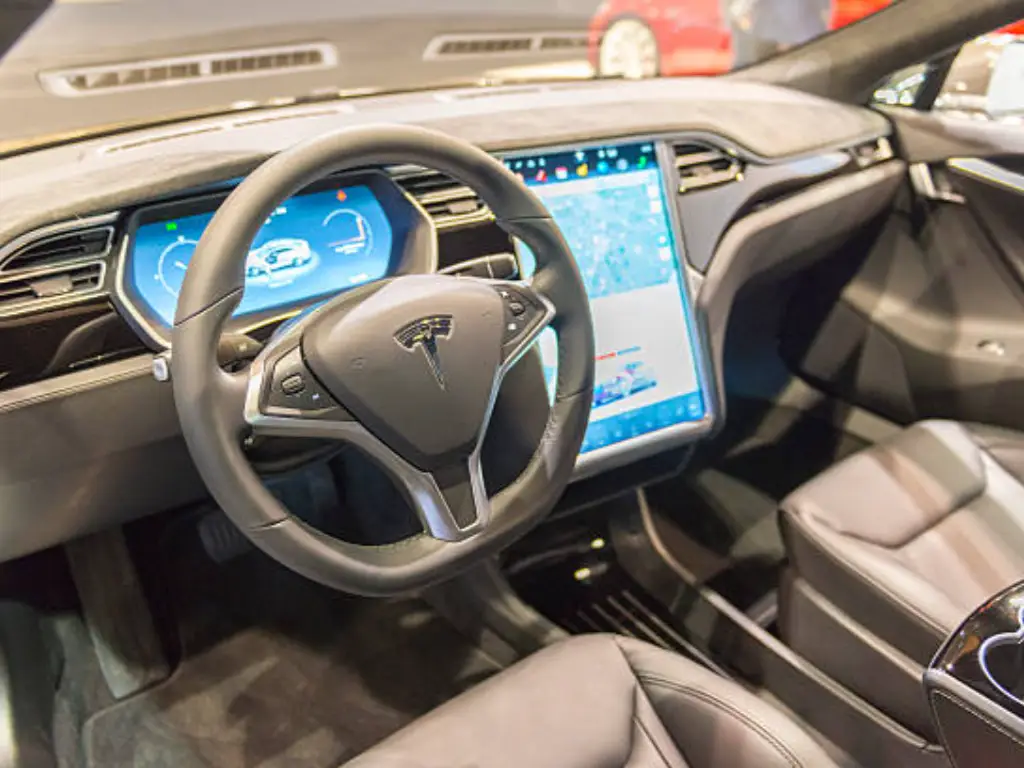
The 2010s Tesla Model S: The Minimalist Revolution and the Dominance of the Screen
The arrival of the Tesla Model S in 2012 was a watershed moment for car’s interior design. It stripped away decades of convention, eliminating nearly all physical buttons and consolidating control into a massive 17-inch central touchscreen. This minimalist approach was as revolutionary as the car’s electric powertrain.
The dashboard was reduced to a clean, horizontal plane, creating a sense of spaciousness and simplicity. This screen-centric philosophy fundamentally changed the driving experience, turning the car into a rolling electronic device that could be updated over the air. While initially controversial, this design forced the entire automotive industry to rethink human-machine interfaces (HMI), paving the way for the digitally dominated interiors of today. Tesla’s approach to interior design signaled a shift toward smart technology integration, ensuring the best user experience for both the driver and passengers.
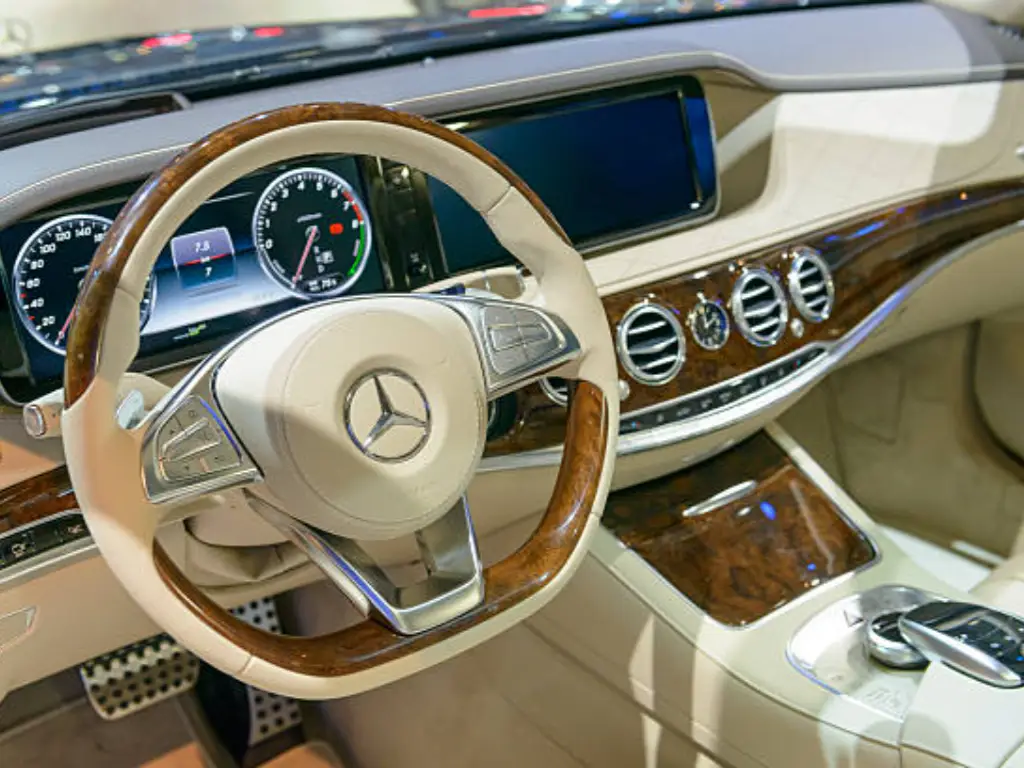
The 2020s Mercedes-Benz S-Class: The Apex of Digital Luxury and Ambient Tech
If the Tesla was about minimalist tech, the modern Mercedes-Benz S-Class represents the pinnacle of immersive, digital luxury. The vehicle interiors are a “third space”—a seamless blend of a lounge, office, and wellness retreat. The massive MBUX Hyperscreen, an optional 56-inch curved display that spans the entire dashboard, serves as the architectural centerpiece. However, the technology is not just for control; it’s for creating an experience. The active ambient lighting system, with 250 LEDs, is integrated with driver-assistance systems, pulsing to warn of a potential collision or glowing to confirm a voice command. Augmented reality navigation overlays directions onto a live video feed in the driver’s display. It’s a holistic environment where light, sound, touch, and information converge to create a new, deeply personalized form of automotive luxury.
This interior prioritizes maximum comfort for all passengers, ensuring a comfortable ride that redefines the idea of luxury car interiors. For long journeys, the seat design and ambient technology create an atmosphere of relaxation and ease, making it an ideal space for extended travel.
Decoding the Design Language: Key Styles That Shaped Our Cars
The evolution seen in our milestone vehicles was guided by broader artistic and cultural movements. Understanding these key design styles reveals the deeper “why” behind the design choices of each era.
Art Deco and the Age of Opulence (1930s-1940s)
Before World War II, the most luxurious vehicle interiors were heavily influenced by the Art Deco movement. Drawing inspiration from architecture, fashion, and fine art, these cabins were showcases of bespoke craftsmanship.
Designers used symmetrical, geometric patterns, rich materials like polished walnut burl and mohair fabric, and intricate chrome or nickel-plated details. Dashboards were often works of art, featuring beautifully crafted, watch-like instruments set in ornate panels.
This era focused on creating interiors with both functionality and a touch of luxury, aiming to offer the utmost in comfort and style.
The Jet Age & Mid-Century Modern (1950s-1960s)
As seen in the Eldorado, the post-war era was defined by a forward-looking excitement. This translated into interiors with aircraft-inspired elements like wrap-around windshields and lever-like controls. The color palettes became adventurous, and new materials like vinyl allowed for more expressive shapes. This style was about celebrating motion, technology, and a sense of boundless possibility, contributing to the functionality of a vehicle and emphasizing a comfortable ride for passengers.
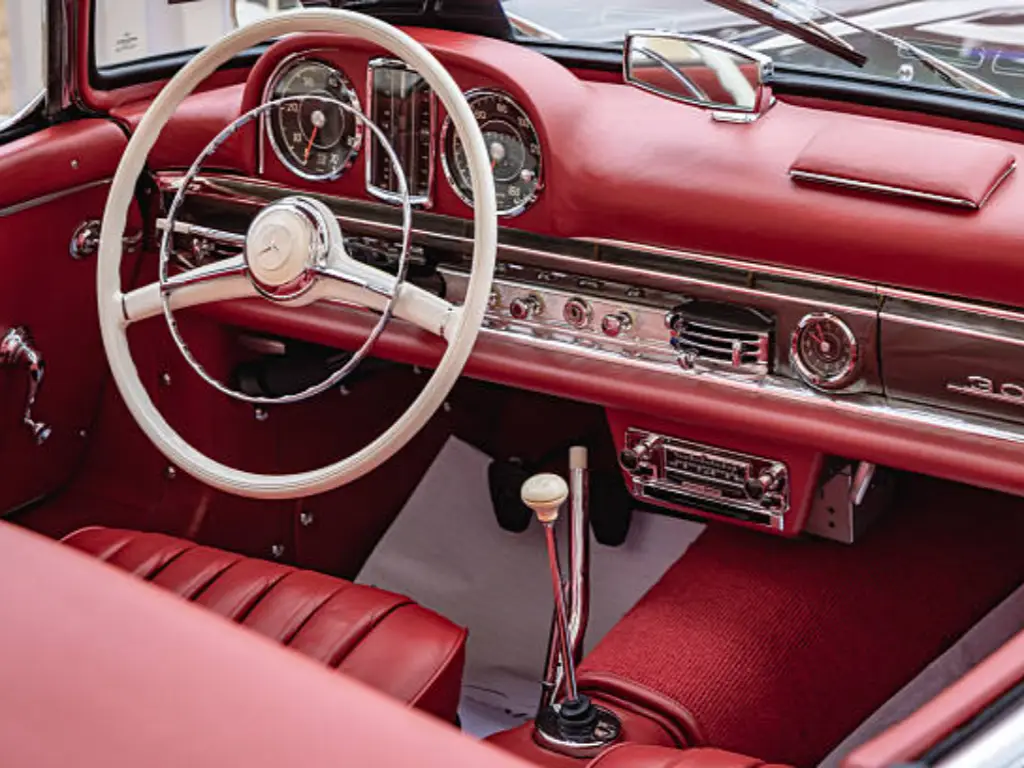
Driver-Focused Functionalism & Brutalism (1970s-1980s)
This period saw a shift toward pragmatism. Influenced by safety regulations and a more functionalist design approach, interiors became more angular and driver-centric. Black plastic became a dominant material due to its cost-effectiveness and ability to be molded into safety-conscious shapes.
While less ornate, this era perfected the ergonomic “cockpit” layout, a principle that remains fundamental to performance car design. The focus was on creating a vehicle’s interior that was as efficient as it was functional, ensuring a practical and safe driving experience.
The Digital Revolution & Modern Aesthetics (1990s-Today)
Beginning in the 90s and accelerating rapidly, technology began to dictate interior architecture. Early digital displays gave way to integrated touchscreen displays or navigation screens, and now, to the massive, all-encompassing interfaces of the present.
This has spawned several sub-styles: the clean, screen-focused Minimalism pioneered by Tesla; the immersive Digital Luxury of brands like Mercedes-Benz that use technology to create an ambiance; and a growing trend toward Sustainable Modernism, which prioritizes renewable and recycled materials as a core part of its aesthetic appeal.
These trends have further enhanced the vehicle’s interior, making it a space that not only emphasizes the comfortable ride but also provides the maximum comfort and technology that we now expect in luxury cars.
| Design Era | Core Philosophy | Key Materials | Defining Characteristics |
| Art Deco | Ornate, artistic, luxurious | Polished Wood, Mohair, Chrome | Symmetrical layouts, geometric patterns, bespoke instruments |
| Jet Age | Futuristic, optimistic, bold | Vinyl, Chrome, Plexiglass | Wrap-around dashboards, aircraft controls, vibrant colors |
| Functionalism | Driver-centric, pragmatic, safe | Molded Plastic, Velour, Vinyl | Angular consoles, ergonomic layouts, digital clocks |
| Digital Age | Tech-integrated, user experience | Soft-touch Plastics, Aluminum, Glass | Large screens, ambient lighting, minimalist surfaces |
More Than Skin Deep: The Evolution of Materials and Craftsmanship
The history of car interior design cannot be told outside of the history of its materials. These materials not only establish the appearance and feel of a cabin, but also indicate the manufacturing technology and environmental awareness at the moment.
The first interiors in automobiles were made of natural products known to coachbuilders: solid wood in the dashboards and trim, real leather in the seats, and wool in the carpeting. These substances were very labor-intensive in order to mold and complete, becoming the symbol of luxury.
The post-war boom brought to the scene a series of artificial materials. Vinyl emerged as an alternative to leather, which was popular, durable, and colored. With the development of injection molding, plastics permitted more integrated and detailed designs of dashboards, which took the place of the multifaceted wood and metal structures of the earlier dashboard designs.
In the modern world, it is all about an advanced combination of tradition, technology, and sustainability. Although premium leather and open-pore wood will continue to be staples of luxury, new advanced materials have begun to be added. Carbon fiber offers a high-tech low low-weight appearance to performance vehicles. Alcantara is a long-lasting material with a high grip instead of suede. More importantly, there is a new wave of environmentally-friendly, sustainable materials, such as vegan leathers made of mushrooms or pineapples, recycled plastic textiles, or reclaimed wood, which may indicate an age when luxury and environmentalism will be inseparable. Modern and sustainable features can also be seen in the customization possibilities that consumers have presently, as the interior components of their vehicles can be adjusted to reflect their own personal preferences and tastes.
| Decade | Dominant Seating Material | Dashboard Material | Trim & Accent Material |
| 1930s-40s | Genuine Leather, Mohair | Painted Metal, Solid Wood | Polished Nickel, Bakelite |
| 1950s-60s | Vinyl, Leather | Padded Vinyl, Painted Metal | Polished Chrome, Aluminum |
| 1970s-80s | Velour Fabric, Vinyl | Hard Molded Plastic | Faux Woodgrain, Black Plastic |
| 1990s-00s | Cloth, Leather | Soft-touch Plastic | High-gloss Wood, Satin Metals |
| 2010s-Now | Leather, Alcantara, Textiles | Synthetic Leather, Glass | Carbon Fiber, Open-pore Wood |
The Heart of Restoration: Bringing a Classic’s Soul Back to Life
With the background of this rich history, of the luxurious woodgrain trimming of a Cadillac of the 50s and the practicality of a Lamborghini of the 70s, one key question is left: How can we save this history? To a classic car owner, getting parts that can truly restore the beauty and spirit of the original design is usually a huge challenge, especially in cases where the manufacturing company stopped operation many decades ago. A broken dashboard, an ugly steering wheel, or a lost detail may undermine the whole personality of an old car.
It’s Not Just a Part, It’s a Piece of History: The Sunway Autoparts Promise
This is the problem that Sunway Autoparts has been working on since 2007. We know that there is more than just repairing a classic Ford, Volkswagen, or Chevrolet of the 1920s through 1990s; it is the preservation of history.
To our partners in restoration shops and distribution, our value gets created through a physical manifestation of where it is needed the most:
- Customized to Fit You. It is known that time is money to a restoration professional. Our components, including an entire dash panel, seat covers, floor mats to a small plate console shift bezel, are designed to fit out of the box. This saves you expensive time on making modifications, saves you a lot of time on labor, and also speeds up project turnover.
- No compromise on Authenticity and Quality. We do not simply replace, but we re-create history. Our intention is to re-create the original factory look with OEM quality, with all woodgrain trim or steering wheel being loyal to the soul and image of the original car. We believe in using traditional materials so that the beauty and the personality of old interiors are never compromised.
- Ease of Maintenance. We prefer our authenticity, but we also understand the need to ensure that maintenance is as easy as possible for the owners. Not only are our parts of high quality, but they are also created to be long-lasting and easily maintained so that the spirit of a classic automobile can live on through the ages.
- A consistent and steady Collaboration. We have a power supply chain of almost 200 suppliers as your manufacturing backbone. This gives our distribution and wholesale partners a consistent quality, dependable inventory, flexibility in bulk ordering, and the confidence derived from having a reliable source of classic parts.
After all, we do not merely sell auto parts; we offer the essential interior parts to keep the history of automotive alive in the next generation.
Conclusion
The interior of a car is a complex and rich tapestry made out of threads of technology, art, and culture. The evolution process of the old, crafted cabins, which were used in the past, to the virtual digital cockpit of the modern vehicles can be attributed to human creativity and our never-ending association with the machine.
The interior of a Cadillac, a Lamborghini, and a Tesla can be seen as a story, and each of them is distinct. The advent of self-driving cars and the transition to highly customized, personalized spaces in autonomous vehicles are indicators of the next stage in automotive interior design.
Not only do we appreciate the cars of today more when we know about this evolution, but we also come to realize the extreme significance of the preservation of the historic designs of the past. They do not merely serve as means of transport, but are also chapters of our shared history, and are constantly being influenced by the key trends and the urge for the best user experience.

